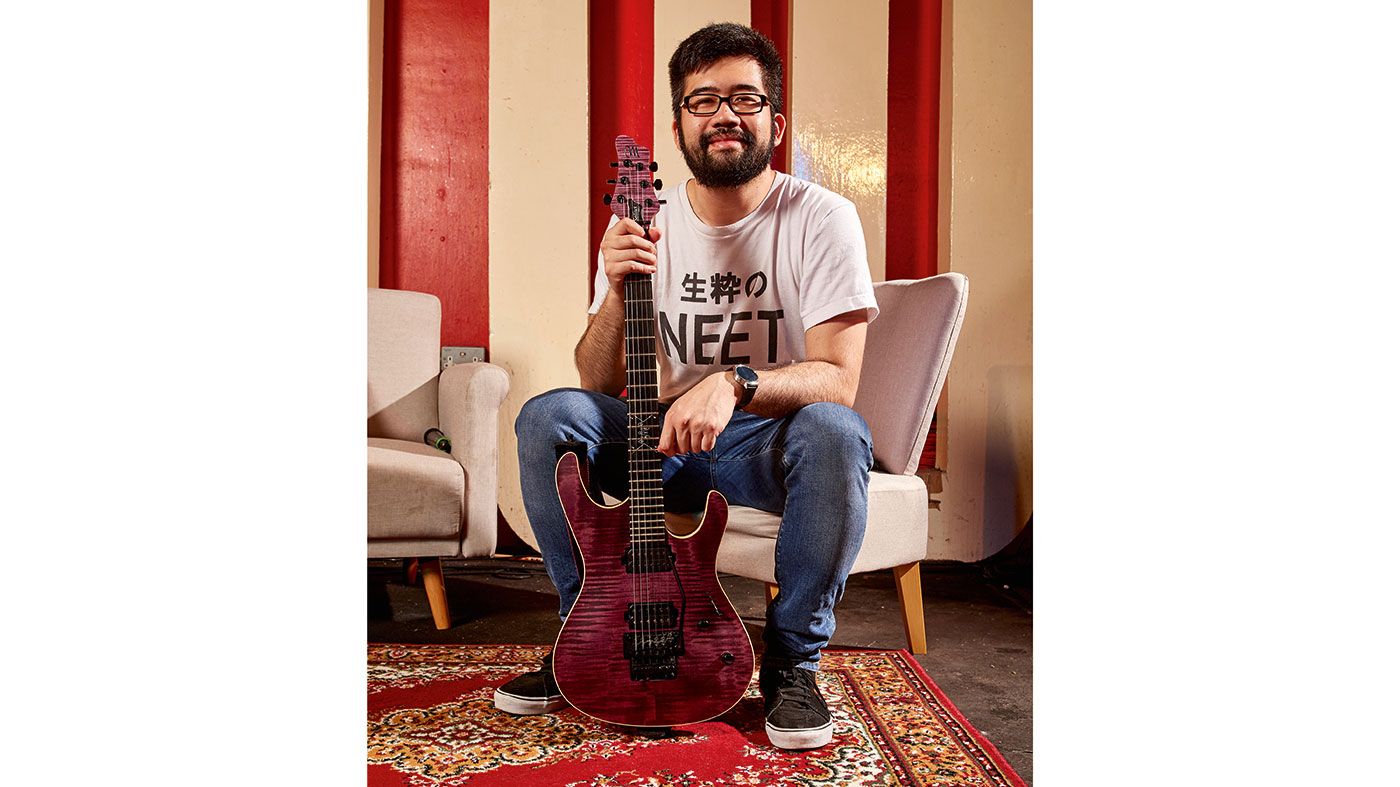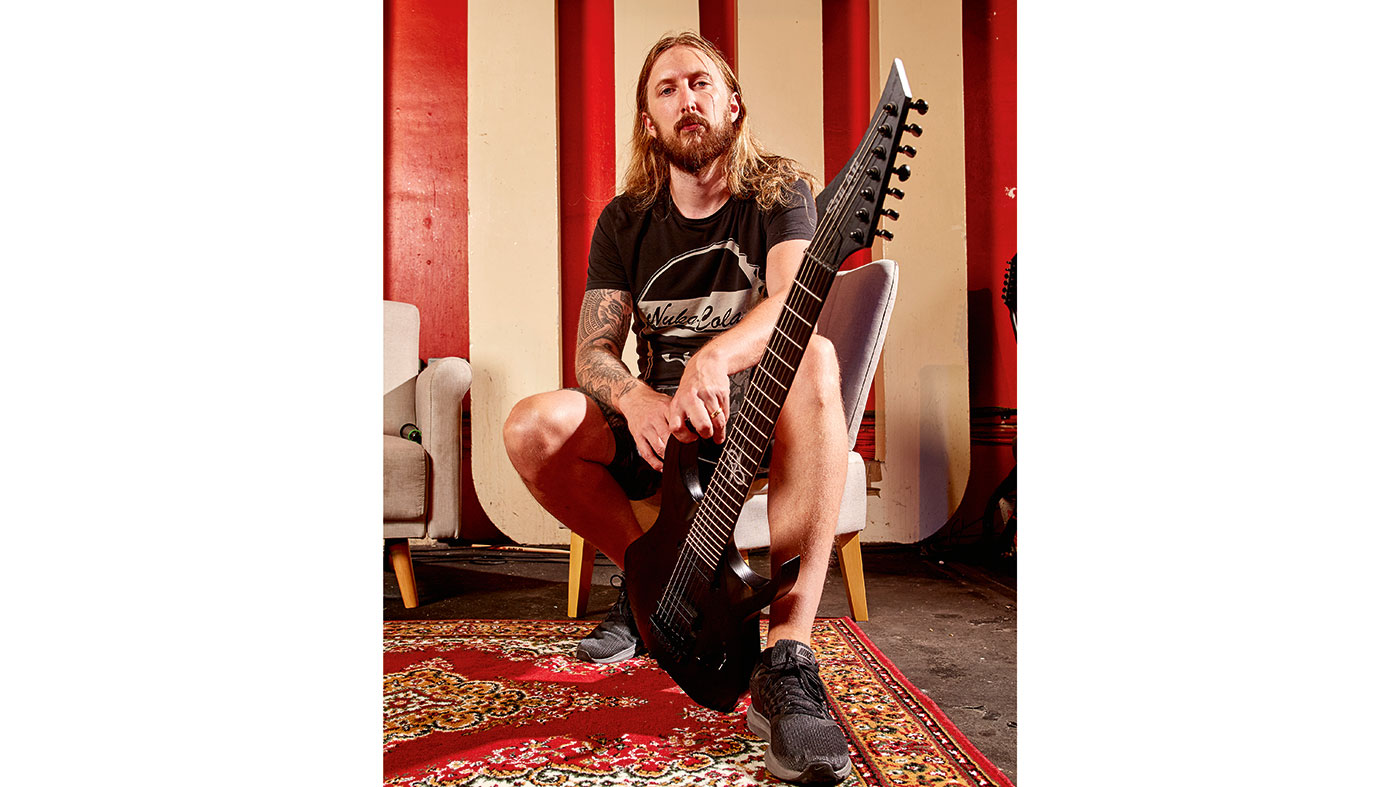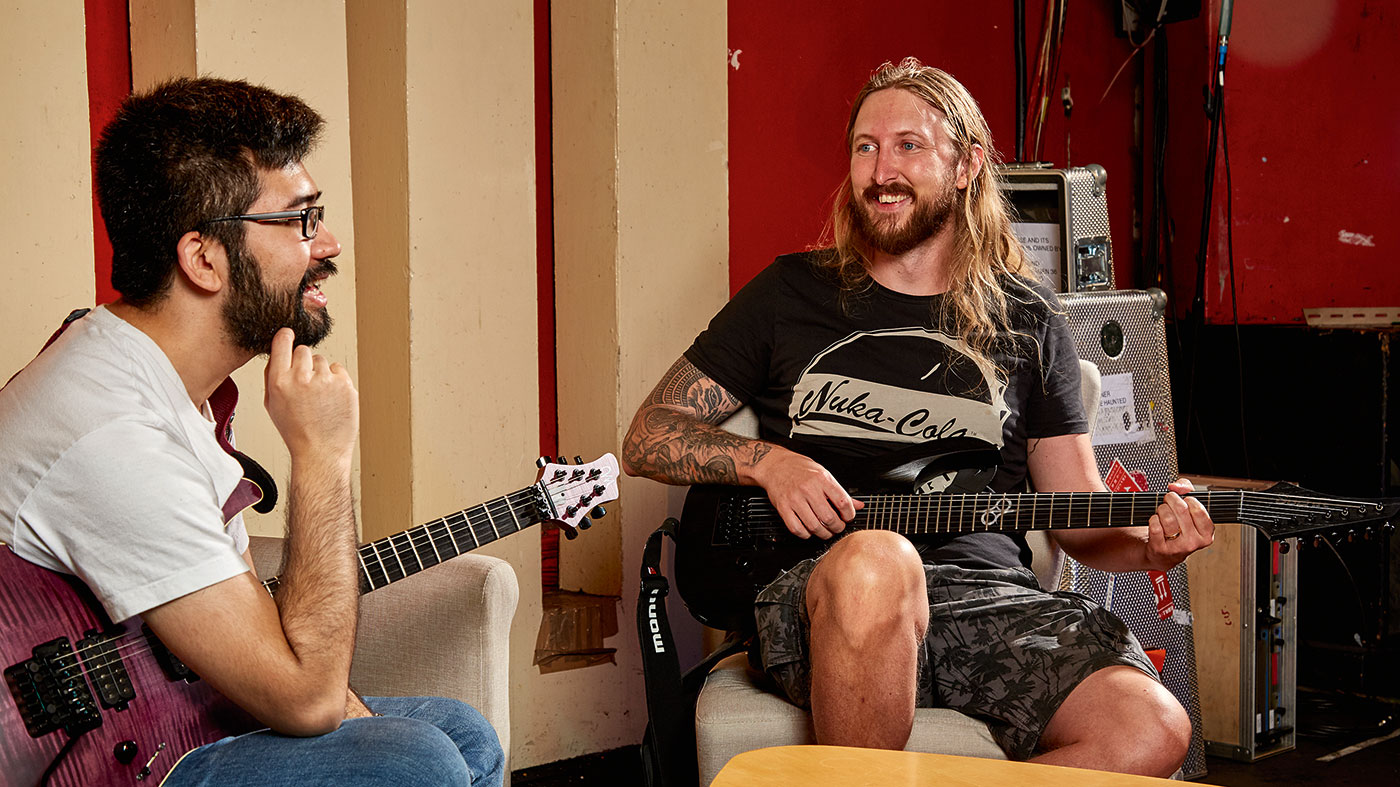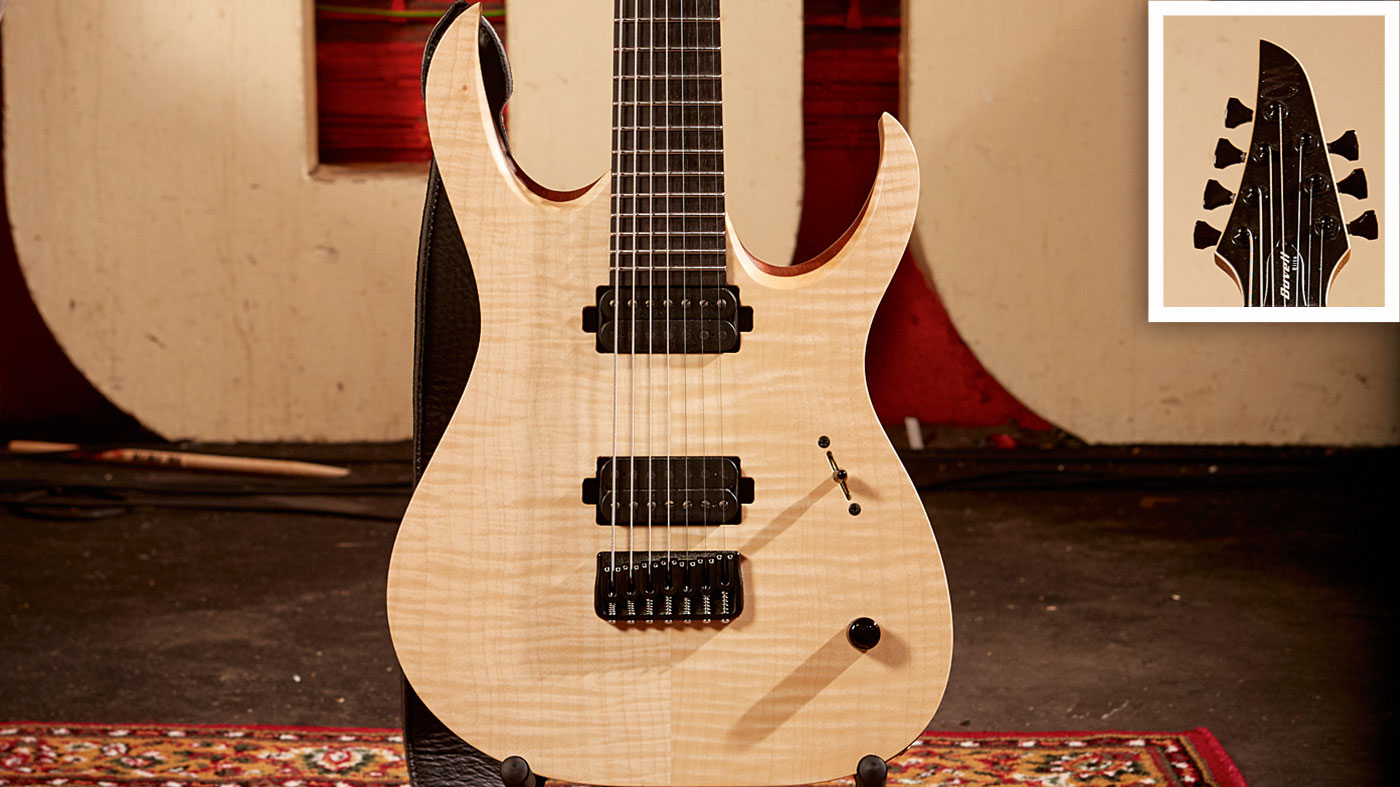Ola Englund and Sithu Aye: “You need to find your own voice and ideas... That’s what the audience clings onto”
We join two modern metal guitar gurus to talk social media, music and tracking

Down the steps of Oxford Street music venue The 100 Club and through the corridor, two musicians are delivering a clinic on behalf of British audio gurus Focusrite. Ola Englund - guitarist in Swedish metal bands The Haunted and Feared, and king of high-gain amp shoot-outs - is joined by rising Scottish instrumental player and producer Sithu Aye.
Musically, they are distinctly different, yet in their methods to success lie some striking similarities - from the years spent writing, recording and learning as lone wolves into the dead of night to embracing the outreach of social media and using their wits and personality to boost their profiles. Which is exactly why they’re the kind of people who get headhunted to inform and inspire at events of this kind.
We sit down with two cutting-edge individuals rewriting the very definition of what it means to be a guitar hero in the modern age…
Brave new world
Sithu used the more open playing field of the internet to carve a name for himself as a guitarist...
I ended up making music in my own time at home. It sounded terrible when I started out, but I was just documenting ideas
“The great thing about the internet is that the usual gatekeepers, like labels or radio stations, who dictate what you should be listening to are almost bypassed. When I was at school, the traditional trajectory was the only thing people knew of. You played shows with your band in the hope of impressing a label to put you in a studio and make an album. Obviously, that never happened for me! I ended up making music in my own time at home. It sounded terrible when I started out, but I was just documenting ideas.
“I saw other places to learn about recording, sites like sevenstring.org and the Andy Sneap forum, and discovered a whole community of people. I was lucky that when I released my music online, the progressive/tech metal scene hadn’t really taken off - Periphery and Animals As Leaders were releasing their first albums, so the market wasn’t as saturated. For me, the internet was more about quickly putting out the things I enjoy creating than ‘making it’. I put music on Bandcamp for free to start with...”
The channel tunnel
Ola reveals the secrets behind those impressive social media stats...
Get the MusicRadar Newsletter
Want all the hottest music and gear news, reviews, deals, features and more, direct to your inbox? Sign up here.
“Running a channel is not easy. You have to be very consistent with content; there needs to be something going up every day. You are competing with tons and tons of players who are already established. Anyone new to the industry needs to shine through a very saturated market. Over the past 10 years, things have changed a lot.
“When I was starting out, it was all discussion forums. I was helping people out with tutorials and exchanging knowledge before I started on YouTube. I guess that helped give me some street cred! Nowadays, however, everything is already out there, lots of people are doing the same thing. The type of amp demos I’m mainly known for have been done by everyone and their mum!
“You need to find your own voice and ideas - with its own unique spin. That’s what the audience clings onto; they want real people that they can live through. They want to be part of something - be true to yourself because people can tell if it’s an act. Help people out, be part of the community and give information. I did it all by being... me.”

Tone of voice
How you interact with your following is essential, says Sithu...
“Injecting your own personality into things gives it more of a face and relatable character compared to anything with a PR pushing everything. I’ve always been very open and honest about what I do musically. People are always getting in touch with questions about gear and I love talking about the things I’ve learned. I wanted to make sure I could articulate everything in a way that was engaging. I can be serious… sometimes!
“I won’t sugarcoat things, though; if someone who doesn’t play wants to sound like a virtuoso, all I will tell them is to play for five years and then ask. There are no shortcuts. I think with social media there is a lot of instant gratification, but things aren’t easy or free, anyone that’s done something worthwhile spent a lot of time and effort on it.”
Lock and key
Recording yourself is the only sure way of getting tighter, believes Ola...
I think recording myself has helped me become a better rhythm player - even just getting two guitars as tight as possible is a challenge
“There’s no quick solution to getting tight. You have to sit and grind it out. As a kid, I jammed to all my favourite Metallica, Pantera and Testament albums. Throw on Master Of Puppets doing just down strokes, and sooner or later you’ll get very strong with your right hand. If you jam to music that makes you happy, it doesn’t seem like practise… you’re having fun. I’d sit there playing to Machine Head or Slayer on CD. That was the key to my rhythm playing and I guess I’ve always been a fan of ‘the riff’. Those classic 90s ones, rather than the super-djenty chopped up ones of today.
“Mainly, I think recording myself has helped me become a better rhythm player - even just getting two guitars as tight as possible is a challenge. That helped when I got into double-tracking, and then later, quad-tracking. It becomes even more important to stay tight when you have two guitars on each side.”
Sweating bullets
Ola’s guide to tracking those thundering, high-gain rhythm guitars...
“Simplicity is still the key to recording metal guitar - many people seem to think you can use loads of post-prod EQ and it’s as easy as putting a mic up. But the tone that shines through will come from the fingers and amplifier, so it makes sense to get the best source sound. If you are a metal player, pick hard on those strings. It really does sound a lot, lot better.
Simplicity is still the key... The tone that shines through will come from the fingers and amplifier
“When I did more re-amping back in the day, people would send over softly picked DI files and I quickly learned no amp can save that. It starts with your fingers and the tip of your pick. It’s about how you behave on those strings, so put some effort into it. Heavy metal is not dynamic jazz! Riffs always sound better hard and heavy. I’ll usually put a high-pass and a low-pass filter on the guitars. The guitars in my production tend not to have too much low-end, I bring in the bass guitar to rumble underneath and make an awesome recording even more awesome.”
Battle of the brands
Sithu on exactly what gear companies look for in the musicians they work with...
“I think you should be really clear on what you want from them. A lot of people think working with gear companies for endorsements is a one-way street to getting stuff for free from them. It’s not like that. Every single relationship I have with a gear company is a business relationship. To begin with, you need reach. That might be a big social media following, that might be a lot of people listening to your music.
“The companies want whoever can get the name of the brand out there, but also someone easy to work with, who understands things like they do. So this clinic isn’t a conventional, ‘Let’s talk about Focusrite products’ - they haven’t told me what to say and I’m free to talk about what I want. But I’m a big fan of their interfaces because people look at a 1/4-inch guitar jack, look at the inputs on a PC and wonder where to plug it in. There’s a lot of initial confusion, you get told you need an interface, which some might assume is a sort of mixing desk, but really it can be a tiny USB device sat on your desk. First I used the Scarlet 2i4 and I currently run everything through my Scarlet 18i8. That interface is my hub for everything to do with sound; it’s the great enabler of home recording.”

Master clinician
The Ola Englund guide to being a session guitarist...
“I think the reason why people feel I’m professional or easy to work with is because I come from an office background, I have that kind of work ethic. I used to be an accountant and I brought that into what I do today, which will probably surprise people. I’m always working - I take the kids to day care, I get back home and I work until seven in the evening. I was taking care of people before in business and I still am now!
“If you show you can be professional and deliver quickly, or at least have a plan for what you can deliver, you are halfway there. When someone emails me, I respond quickly, saying what I’ve done, these are my terms, these are my plans… make them go wild when they get that first email. If you can do that, you can get people on board. Be clear from the start, then be quick and deliver quick.”
Mayones on chops
Sithu explains why there’s only one guitar brand out there for him...
“The older I get, the less I look at the specs. What I care about is how an instrument makes me feel. Whenever I pick a new guitar up, I’m thinking, ‘Do I get the response I want from this?’ My first time playing a Mayones was at the GuitarGuitar shop in Glasgow. I found a seven string and loved it so much, I bought it right there and then. I have four now, two of which are customs that I will keep until the day I die! They’re not a big company, with just one factory in Gdańsk, Poland. I use them for touring, tracking, pretty much anything I do.”
As I am
Ola on how a performance’s ugly truths can give it more identity...
“All those noises and mistakes are tiny quirks that are important to capture. Modern metal can be so polished, guitars can quickly sound like synthesizers or something programmed. People chop guitar signals and make them perfect… which removes a lot of excitement.
“The guitar is a weird instrument; it makes weird sounds so I think it’s better to keep those unique quirks. People didn’t sit and edit their guitars to perfection in the 90s; they would be riffing out really hard on the strings playing a full song at a time. You can hear there’s a live feel you should never go back and edit out. Go for one take and keep that live emotion, it will shine through even a clean production. Let some of the mistakes stay because they make it more personal… music is supposed to be a wreck, in a sense. I can hear it when bands have surgically edited their songs.”

Chord chemistry
Physics and music theory aren’t a million miles apart, believes Sithu...
“I’m a big theory nerd. I did physics at university, so I guess I’m the kind of person that likes information. With regards to my chords - a chord starts with the first, third and fifth of any given scale. Add the seventh just by counting up the notes and that’s your seventh chord, from there you can stretch further to find ninths and beyond. Some people have described it as jazzy, which I would say does a disservice to jazz ha ha!
Some people have described it as jazzy, which I would say does a disservice to jazz ha ha!
“I learned all the modes in every position because I’m a glutton for punishment and eventually there was a shift between learning things and being able to apply them to things people actually listen to. Don’t just learn the scales; learn how they relate to chords. It’s all connected and actually makes a lot of sense. Everything starts from a simple basis - I love that idea and it’s just like a physics equation that opens into a load of complexity.
“The major scale is exactly the same. Think about what kind of emotion you associate with songs you hear? I love minor nine sounds because they have this melancholic vibe. Even changing the voicing of a chord can open up a whole world of newness, and that’s before you even get to more advanced, non-functional harmony.”
Falling into infinity
Sithu on why getting technical can do both harm and good...
“There’s a danger when you are learning technical music that everything you play has to be that way. When I got into Dream Theater, everything had to be in a dumb time signature and now most of my music is actually in 4/4. Simple isn’t bad; simple is just simple. You might need something incredibly simple depending on the context.
“Progressive metal is a capsule term for metal musicians who kinda want to do whatever but still be broadly described as heavy, sometimes they often feel like they have to operate in a certain way. There are moments in my music that are challenging - to the point of me hating myself for having written it when trying to play it live. If parts are complex, that’s just in my toolkit for making music. But the more esoteric you go, the more niche you get and you start losing people.
“I like catchy melodies people can hum or sing along to. Plini is great for that. Animals As Leaders do it all, they have these harmonically dense bits and then something like Physical Education, which almost turns into a football chant live! When I solo it’s mainly minor pentatonic. That’s what’s catchy. I want people to remember my hooks and the pentatonic is the hookiest!”

Solar eclipse
Ola reveals the story behind his new brand, Solar Guitars...
“Throughout the years I’ve been involved in other brands and had signature guitars. I’ve seen a lot of flaws in the industry in general. Just like with how I started with videos or making my own music, I thought I could have a go at doing it myself. My plan was to do it better and be more personal about it.
“The problem with the industry today is a lot of the old-time dealers and distributors, it’s a big bureaucracy of people involved. Another issue with previous brands was that a lot of people around the world wanted those guitars but couldn’t order them through their dealers. So it was impossible for them… which kinda pissed me off.
“That was the initial idea for Solar guitars. I could do it myself, sell direct and reach all these people around the world. I took my own designs that I’d been working on for a previous endorser and made them using my own name. Things didn’t happen quick enough because of the bureaucracy; you have to do news twice a year well before NAMM to inform dealers and distributors. I just want to release new stuff all the time!
“It’s a no-bullshit company. Here’s the guitar, if you don’t like it just ship it back and we’re still happy. There’s a community feeling to this brand - I was worried at first, but it seems like a lot of people appreciate how we’re breaking from the tradition of what a guitar company should do.”
Amit has been writing for titles like Total Guitar, MusicRadar and Guitar World for over a decade and counts Richie Kotzen, Guthrie Govan and Jeff Beck among his primary influences. He's interviewed everyone from Ozzy Osbourne and Lemmy to Slash and Jimmy Page, and once even traded solos with a member of Slayer on a track released internationally. As a session guitarist, he's played alongside members of Judas Priest and Uriah Heep in London ensemble Metalworks, as well as handling lead guitars for legends like Glen Matlock (Sex Pistols, The Faces) and Stu Hamm (Steve Vai, Joe Satriani, G3).













